Downloaded 43 times

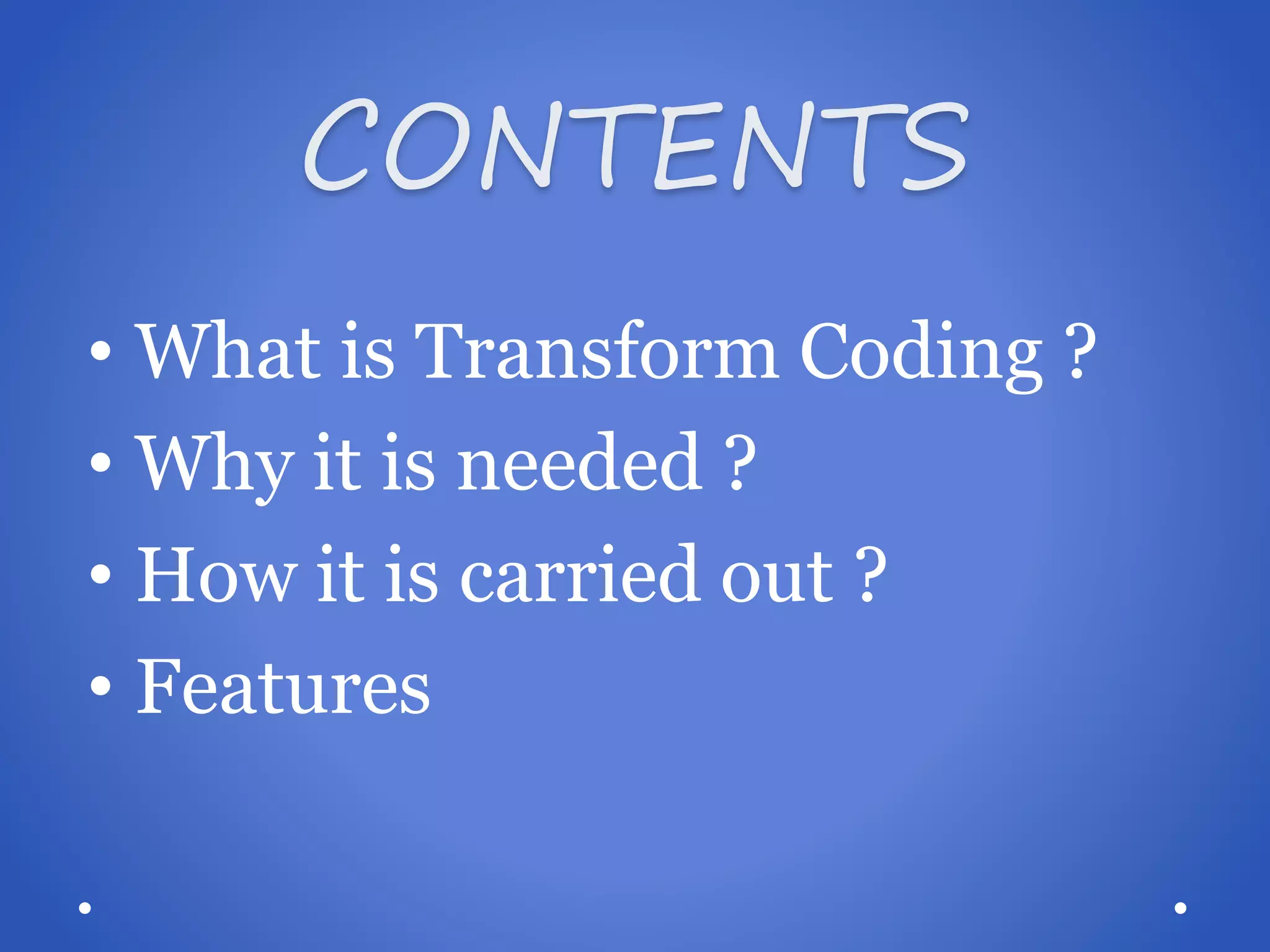
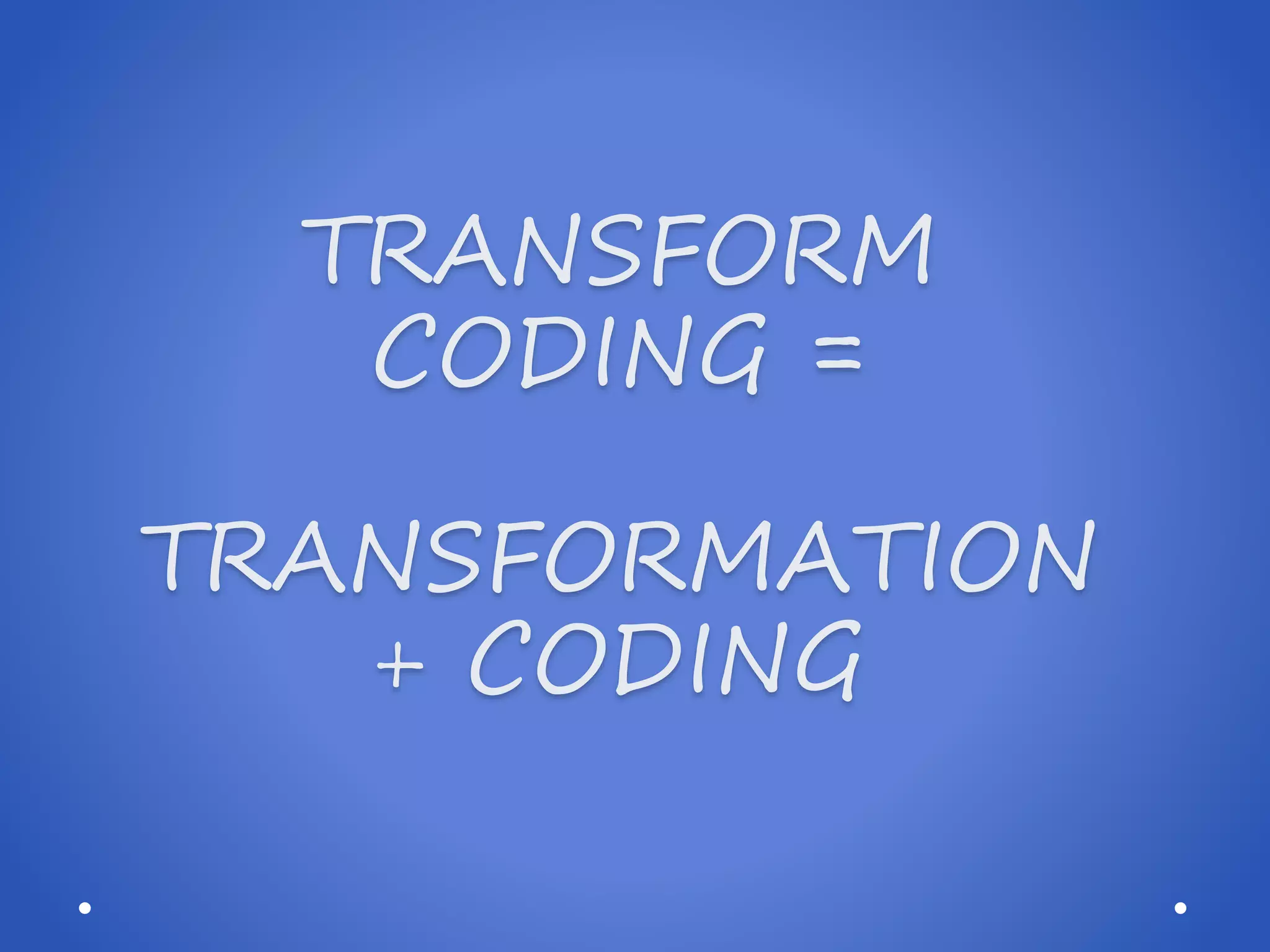


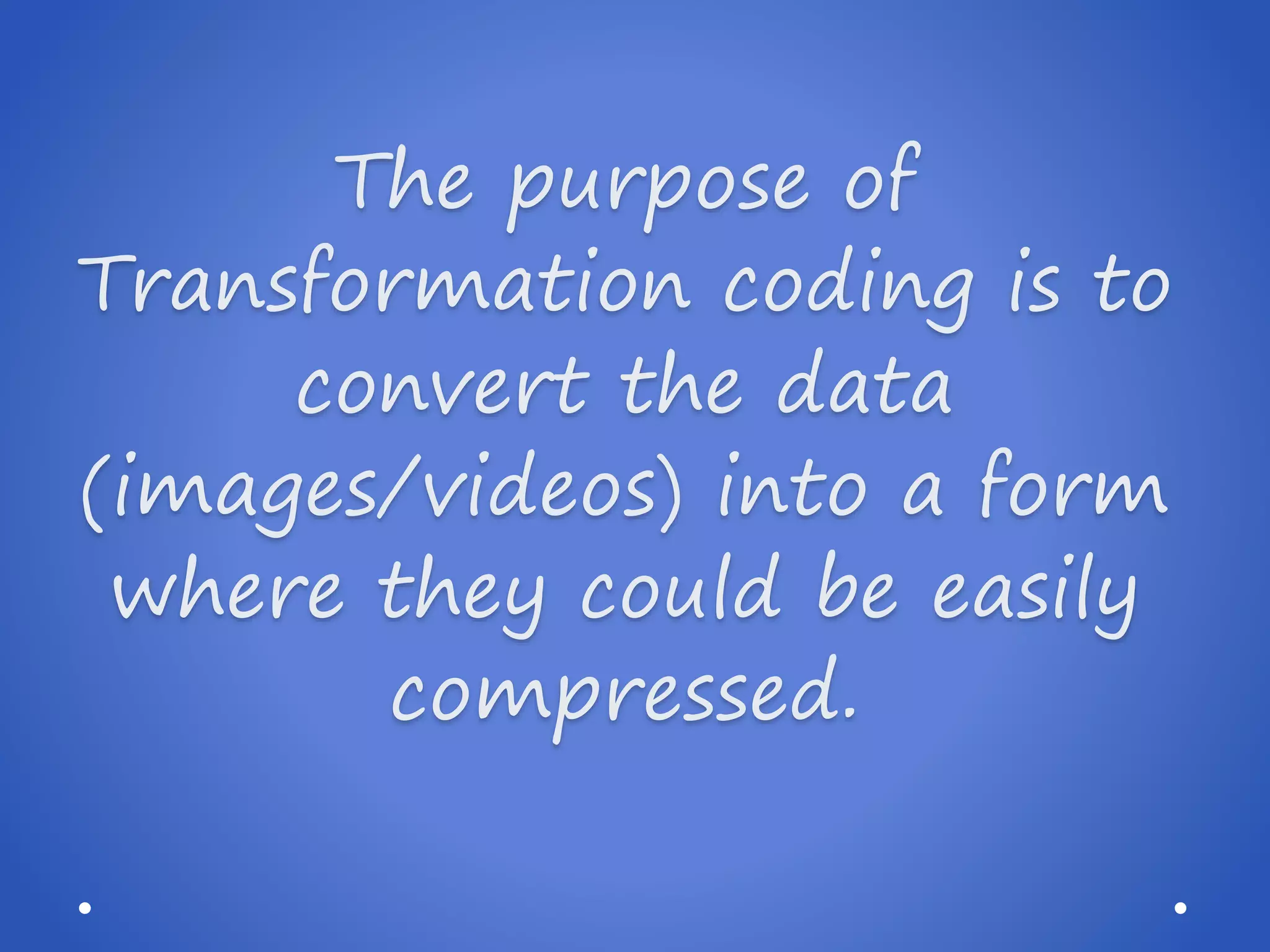
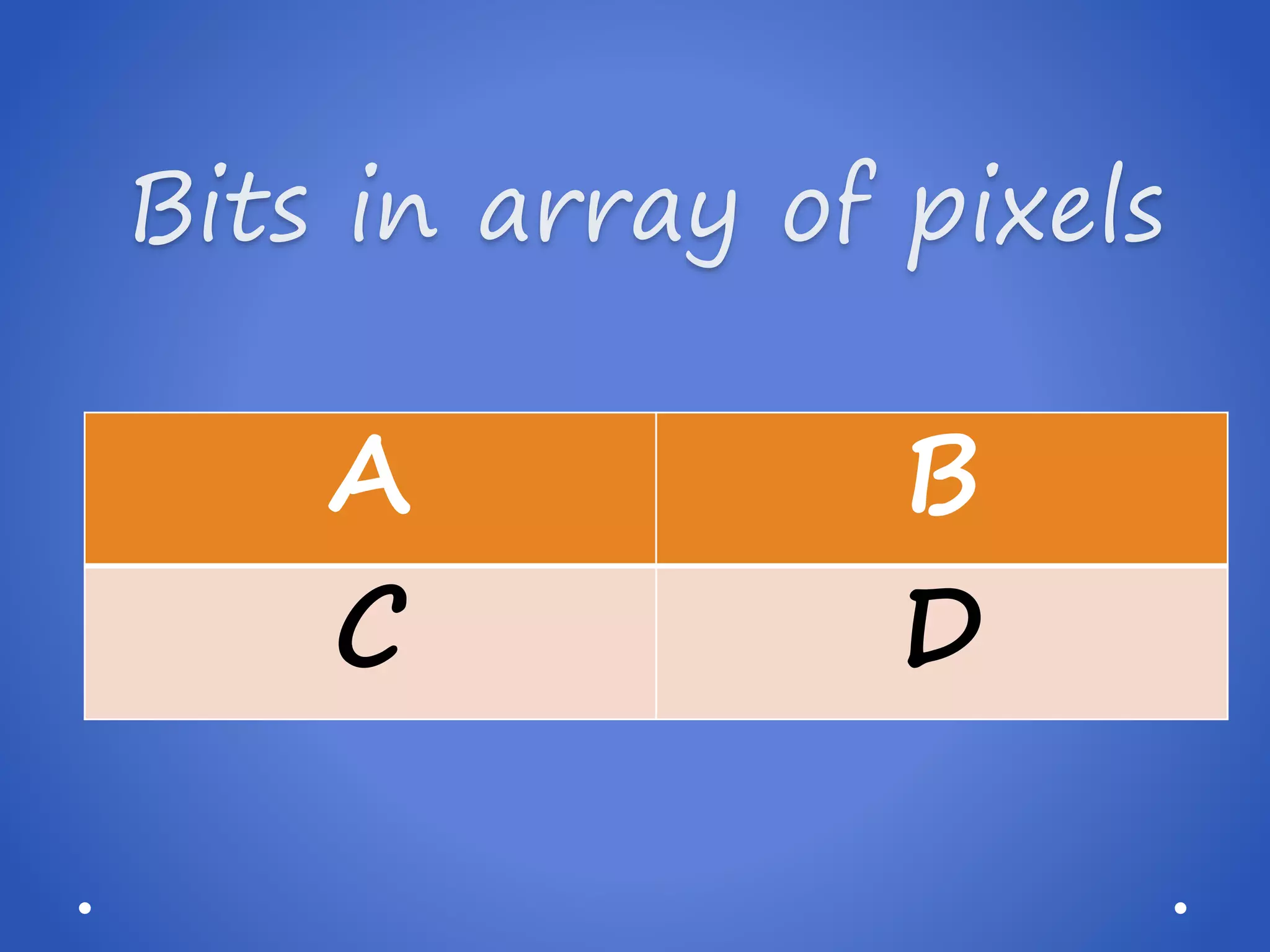
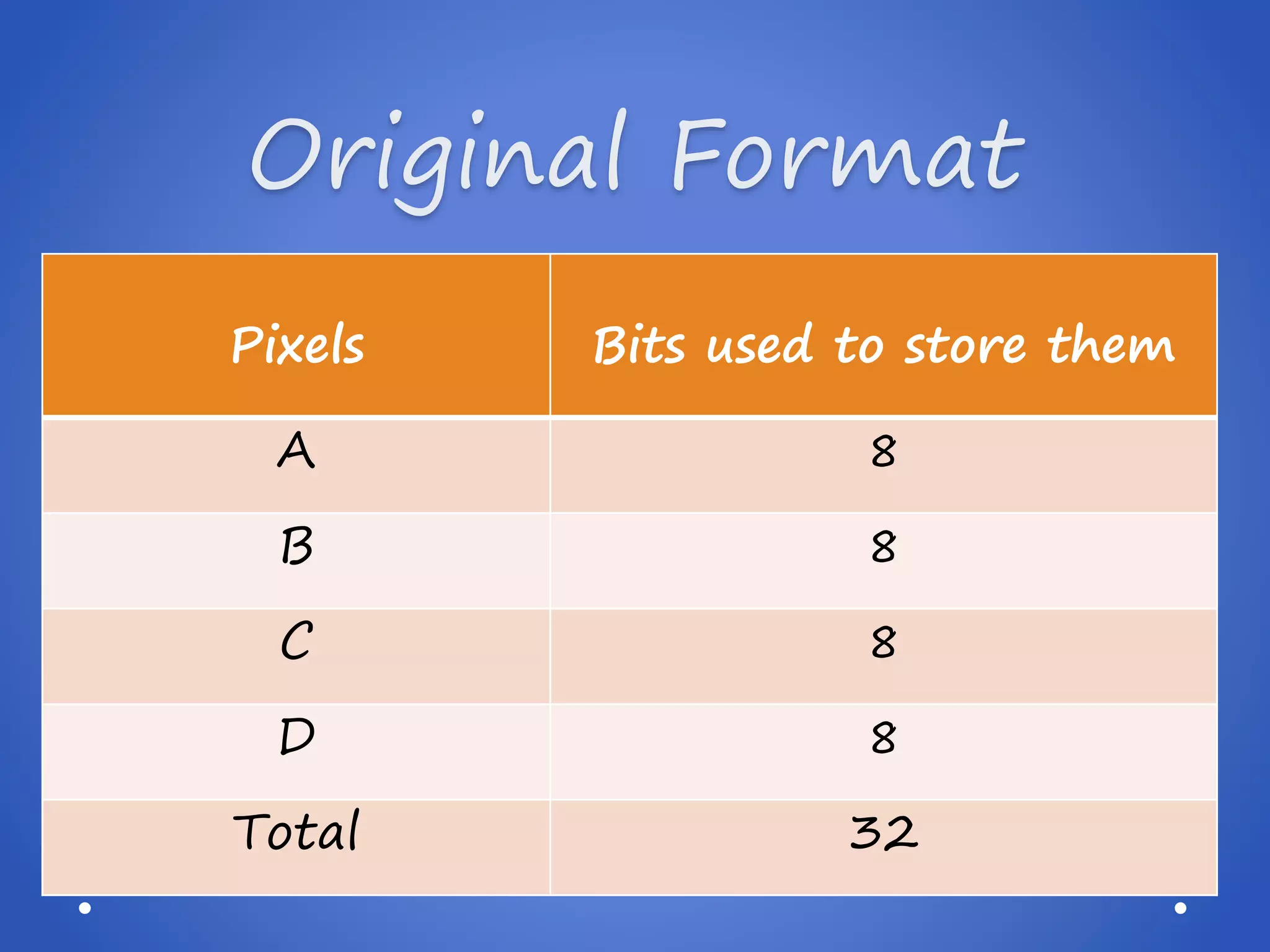

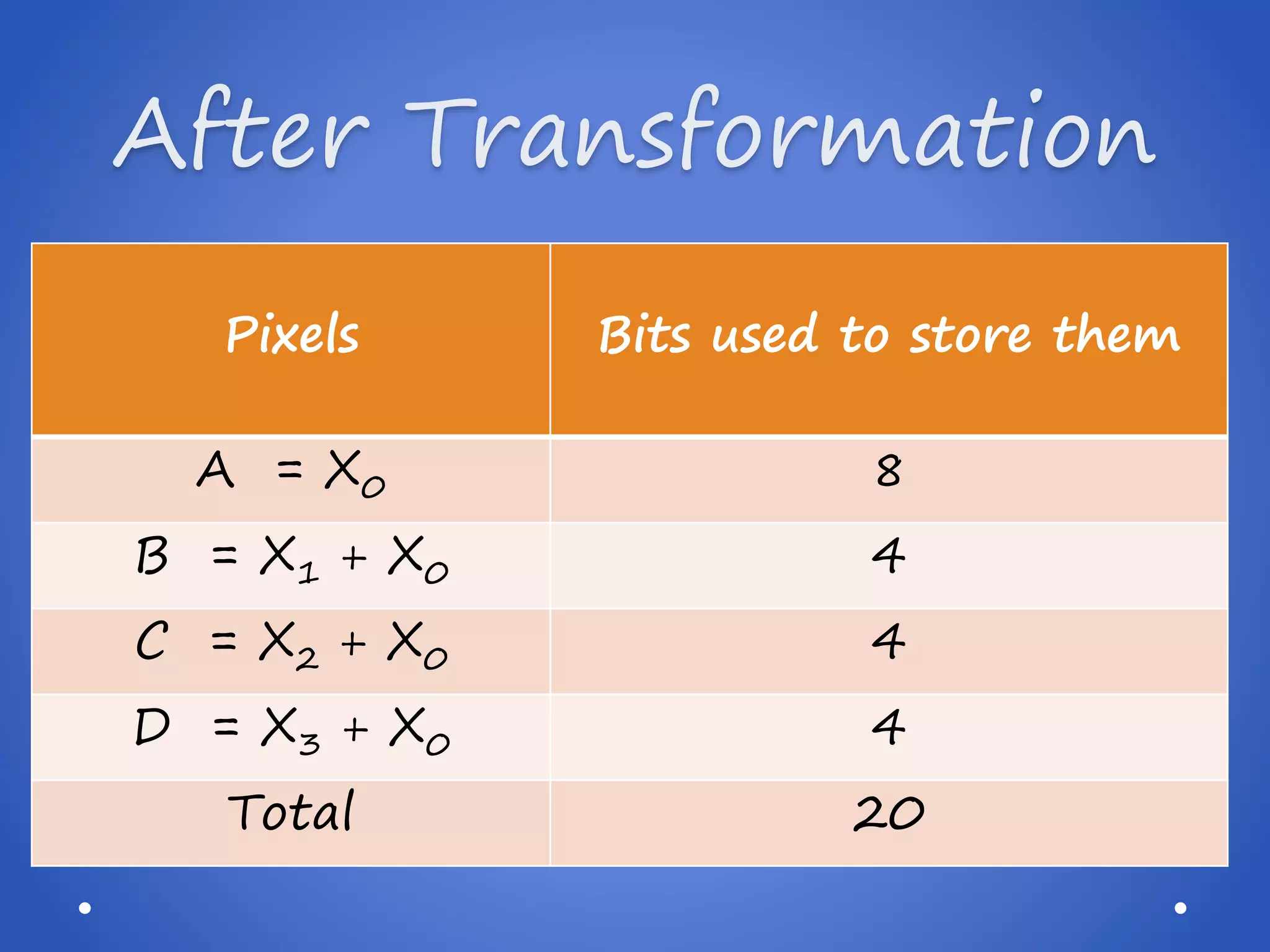
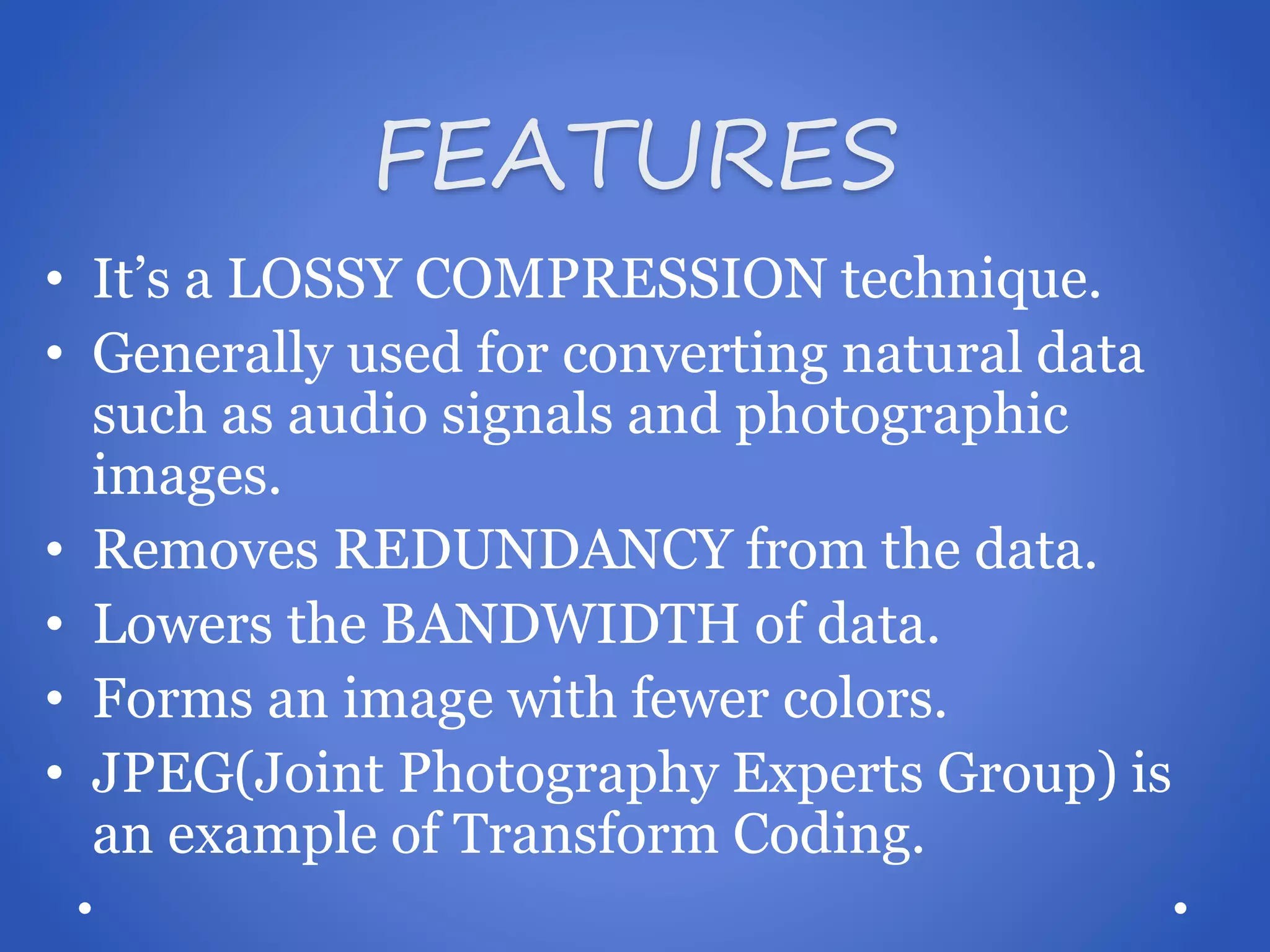

Transform coding is a lossy compression technique that converts data like images and videos into an alternate form that is more convenient for compression purposes. It does this through a transformation process followed by coding. The transformation removes redundancy from the data by converting pixels into coefficients, lowering the number of bits needed to store them. For example, an array of 4 pixels requiring 32 bits to store originally might only need 20 bits after transformation. Transform coding is generally used for natural data like audio and images, removes redundancy, lowers bandwidth, and can form images with fewer colors. JPEG is an example of transform coding.












Introduction by Nancy on Transform Coding, outlining topics such as definition, need, execution, and features.
Transform Coding breaks down to transformation and coding, where data is converted for specific purposes.
Transformation coding aims to compress data types like images/videos, showing an example of bits before and after transformation.
Transform coding is a lossy compression method used for natural data, reducing redundancy and bandwidth, exemplified by JPEG.
Closing slide thanking the audience.